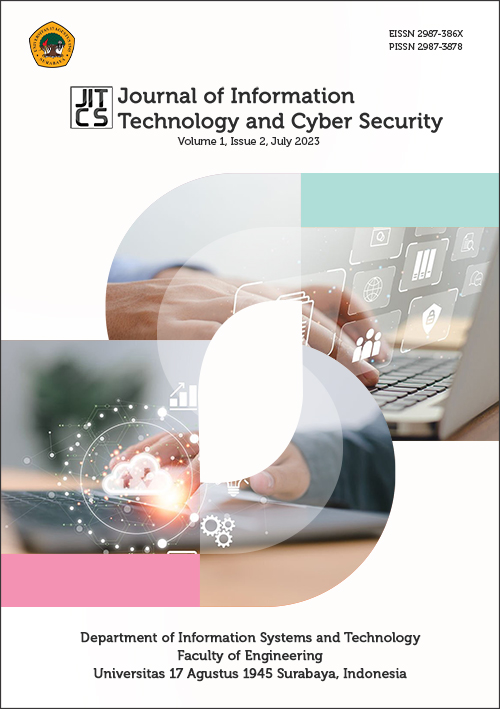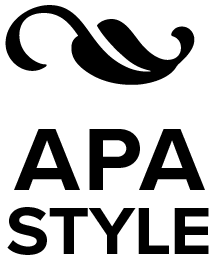Decision Support System for Single Tuition Scholarship Awardees in Higher Education Using Mamdani Fuzzy Inference
Abstract
Universitas Madura implements the Single Tuition Fee (UKT) scholarship program in the Informatics department. The current UKT scholarship selection system uses a traditional model that is still not effective, causing obstacles such as inflexibility in registration time. The print-out documents are vulnerable to damage or loss and difficulty searching when it required. The criteria in the current system consisted of a minimum Grade Point Average (GPA) of 3, a letter of family condition, and also student status in semesters 3 to 7. The three criteria are not enough to determine a scholarship candidate. The recruitment process involves only the Head of the Study Program (Kaprodi). The Informatics study program still has many candidates applying for scholarships reaching around 280%. This research proposes a Decision Support System (DSS) using Fuzzy Mamdani with six criteria, including GPA, Achievement, Parents' Income, Parents' Dependents, Semester, and History of not receiving scholarships with the aim of overcoming these problems. The results show that the performance of the proposed SPK is very good, it is shown by the MAPE value of less than 10% and more efficient time than the current system. This system has also been in accordance with the required functions through the black test.
Downloads
References
Adawiah, R., & Ruliah, R. (2013). Sistem Pendukung Keputusan Pemilihan Penerima Beasiswa Berbasis Fuzzy Mamdani. Progresif: Jurnal Ilmiah Komputer, 9(1), 899–906.
Aflahin, A. A. A. D., Fathoni, M. I. A., & Cindarbumi, F. (2023). Penerapan Sistem Pendukung Keputusan (SPK) dengan Menggunakan Metode Fuzzy AHP (Analytical Hierarcy Process) sebagai Penentuan Penerima Beasiswa PIP. Jurnal Lebesgue: Jurnal Ilmiah Pendidikan Matematika, Matematika Dan Statistika, 4(3), 1452–1467.
Aldisa, R. T., Priyatna, A., Saidah, F., Siahaan, K. Y., & Mesran, M. (2022). Analisis Perbandingan Penerapan Metode MOORA dan SAW dalam Kelayakan Pemberian Bantuan Uang Kuliah Tunggal. Jurnal Sistem Komputer Dan Informatika, 3(4), 393–404. https://doi.org/10.30865/json.v3i4.4281
Ameri, A. A., Pourghasemi, H. R., & Cerda, A. (2018). Erodibility prioritization of sub-watersheds using morphometric parameters analysis and its mapping: A comparison among TOPSIS, VIKOR, SAW, and CF multi-criteria decision making models. Science of The Total Environment, 613–614, 1385–1400. https://doi.org/10.1016/j.scitotenv.2017.09.210
Anam, C., & Santoso, H. B. (2018). Perbandingan Kinerja Algoritma C4.5 dan Naive Bayes untuk Klasifikasi Penerima Beasiswa. Jurnal Ilmiah Ilmu-Ilmu Teknik, 8(1), 13–19.
Andrea, R., & Nursobah, N. (2022). Penerapan Algoritma K-Medoids untuk Pengelompokan Data Penerima Bantuan Uang Kuliah Tunggal bagi Mahasiswa Terdampak Covid-19. Building of Informatics, Technology and Science, 3(4), 632−638. https://doi.org/10.47065/bits.v3i4.1294
Baydas, M., & Pamucar, D. (2022). Determining Objective Characteristics of MCDM Methods under Uncertainty: An Exploration Study with Financial Data. Mathematics, 10(7), 1115.
Cahya, D. N., Hidayat, M., & Asnawi, M. F. (2022). Implementasi Algoritma K-Means Clustering untuk Menentukan Calon Penerima Beasiswa UKT di Universitas Sains Al-Qur’an. Journal of Engineering and Informatic, 1(1), 28–34. https://doi.org/10.56854/jei.v1i1.16
Febriany, N. (2016). Aplikasi Metode Fuzzy Mamdani dalam Penentuan Status Gizi dan Kebutuhan Kalori Harian Balita Menggunakan Software Matlab. https://repository.upi.edu/26232/6/S_MAT_1201755_Chapter3.pdf
Fitriani, I. (2018). Sistem Penunjang Keputusan Pada Solusi Penerimaan Beasiswa bagi Mahasiswa Menggunakan Fuzzy Mamdani. STRING (Satuan Tulisan Riset Dan Inovasi Teknologi), 2(3), 289–298.
Gorianto, F. O., Astawa, I. G. S., & Kadyanan, I. G. A. G. A. (2020). Pengaruh Membership Function pada Fuzzy Dempster-Shafer. JELIKU (Jurnal Elektronik Ilmu Komputer Udayana), 9(1), 77–89.
Khasanah, F. N., & Rofiah, S. (2019). Sistem Seleksi Penerimaan Beasiswa Menggunakan Metode Pendukung Keputusan Simple Additive Weighting. Seminar Nasional Teknologi Informasi Dan Komunikasi (SEMNASTIK), 118–125.
Kirom, D. N., Bilfaqih, Y., & Effendie, R. (2012). Sistem Informasi Manajemen Beasiswa ITS Berbasis Sistem Pendukung Keputusan Menggunakan Analytical Hierarchy Process. Jurnal Teknik ITS, 1(1), A154–A159.
Kusnaidi, M. R., Gulo, T., & Aripin, S. (2022). Penerapan Normalisasi Data Dalam Mengelompokkan Data Mahasiswa dengan Menggunakan Metode K-Means untuk Menentukan Prioritas Bantuan Uang Kuliah Tunggal. Journal of Computer System and Informatics (JoSYC), 3(4), 330−338. https://doi.org/10.47065/josyc.v3i4.2112
Mubin, L. F., Anggraeni, W., & Vinarti, R. A. (2012). Prediksi Jumlah Kunjungan Pasien Rawat Jalan Menggunakan Metode Genetic Fuzzy Systems Studi Kasus: Rumah Sakit Usada Sidoarjo. Jurnal Teknik ITS, 1(1), A482–A487.
Munawaroh, M., Normalisa, N., & Octaviano, A. (2019). Analisa dan Penerapan Sistem Inferensi Fuzzy Metode Mamdani untuk Penentuan Penerima Beasiswa. International Journal of Artificial Intelligence, 6(1), 21–52. https://doi.org/10.36079/lamintang.ijai-0601.31
Musthafa, A., Suyono, H., & Sarosa, M. (2015). Perbandingan Kinerja Algoritma C.45 dan AHPTOPSIS Sebagai Pendukung Keputusan Proses Seleksi Penerima Beasiswa. Jurnal EECCIS (Electrics, Electronics, Communications, Controls, Informatics, Systems), 9(2), 109–114.
Parjono, P., & Witanti, A. (2021). Sistem Pendukung Keputusan dengan Metode Fuzzy Mamdani Berbasis WEB (Study Kasus PT. Time Excelindo Yogyakarta). Karmapati (Kumpulan Artikel Mahasiswa Pendidikan Teknik Informatika), 10(3), 251–258.
Pérez-Domínguez, L., Rodríguez-Picón, L. A., Alvarado-Iniesta, A., Cruz, D. L., & Xu, Z. (2018). MOORA under Pythagorean Fuzzy Set for Multiple Criteria Decision Making. Complexity, 2018.
Putriani, P., Abdurahman, D., & Mardiana, A. (2022). Sistem Pendukung Keputusan Penerimaan Beasiswa Bank Indonesia Menggunakan Metode Logika Fuzzy dan Saw (Studi Kasus Universitas Majalengka). Infotech Journal, 8(1), 13–21.
Raju, G., Thomas, B., Tobgay, S., & Kumar, S. (2008). Fuzzy Clustering Methods in Data Mining: A Comparative Case Analysis. 2008 International Conference on Advanced Computer Theory and Engineering, 489–493. https://doi.org/10.1109/ICACTE.2008.199
Salendah, J., Kalele, P., Tulenan, A., & Joshua, S. R. (2022). Scholarship Determination Using Web Based Fuzzy Tsukamoto Method. Seminar Nasional Ilmu Komputer (SNASIKOM) 2022, 1, 81–90.
Saputra, I., Alkadri, S. P. A., & Insani, R. W. S. (2021). Sistem Pendukung Keputusan Pemilihan Penerima Beasiswa Universitas Muhammadiyah Pontianak Menggunakan Metode Fuzzy Mamdani. Digital Intelligence, 2(1), 25–38.
Sari, N. N. K., Widiatry, W., & Chitayae, N. (2018). The Decision Support System (DSS) to Select the BBP-PPA Scholarship Awardees by Web-Based-Topsis Method. Anterior Jurnal, 18(1), 86–91.
Setiawan, H. (2021). Implementasi Algoritma Fuzzy TOPSIS pada Sistem Rekomendasi Beasiswa. Jurnal Sistem Telekomunikasi Elektronika Sistem Kontrol Power Sistem Dan Komputer, 1(2), 157–166.
Shoaip, N., El-Sappagh, S., Barakat, S., & Elmogy, M. (2019). Reasoning methodologies in clinical decision support systems: A literature review. In U-Healthcare Monitoring Systems (pp. 61–87). Elsevier Inc. https://doi.org/10.1016/B978-0-12-815370-3.00004-9
Sonalitha, E., Nurdewanto, B., Ratih, S., Sari, N. R., Setiawan, A. B., & Tutuko, P. (2019). Comparative Analysis of Tsukamoto and Mamdani Fuzzy Inference System on Market Matching to Determine the Number of Exports for MSMEs. 2018 Electrical Power, Electronics, Communications, Controls and Informatics Seminar (EECCIS), April, 440–445.
Copyright (c) 2023 The Author(s)

This work is licensed under a Creative Commons Attribution-NonCommercial-NoDerivatives 4.0 International License.
Copyright Notice based on COPE (Committee on Publication Ethics) for JITCS: Journal of Information Technology and Cyber Security
-
Ownership and Copyright:
- JITCS: Journal of Information Technology and Cyber Security respects the intellectual property rights of authors. The copyright for individual articles published in JITCS is retained by the respective authors, unless otherwise specified.
- The articles published in JITCS are licensed under a Creative Commons Attribution-NonCommercial-NoDerivatives 4.0 International License (CC BY-NC-ND 4.0), which permits use and distribution in any medium, provided the original work is properly cited, the use is non-commercial, and no modifications or adaptations are made.
- JITCS serves as the initial publisher of the articles, providing them with the first publication platform.
-
Permissions and Usage:
- Distribution for Non-Commercial Purposes: Permitted: Users are allowed to distribute the article for non-commercial purposes, provided the original work is properly cited and no modifications or adaptations are made.
- Distribution for Commercial Purposes: Not Permitted: The article may not be distributed for any commercial purposes without obtaining prior written permission from the author(s).
- Inclusion in a Collective Work (e.g., Anthology) for Non-Commercial Purposes: Permitted: Users are allowed to include the article in a collective work, such as an anthology, as long as the use is non-commercial and the work remains unchanged.
- Inclusion in a Collective Work for Commercial Purposes: Not Permitted: The article may not be included in any collective work or anthology intended for commercial purposes without prior permission from the author(s).
- Creation and Distribution of Revised Versions, Adaptations, or Derivative Works (e.g., Translation) for Non-Commercial Purposes: Not Permitted: Users may not create or distribute revised versions, adaptations, or derivative works, including translations, for non-commercial purposes.
- Creation and Distribution of Revised Versions, Adaptations, or Derivative Works for Commercial Purposes: Not Permitted: Users may not create or distribute revised versions, adaptations, or derivative works, including translations, for commercial purposes.
- Text or Data Mining for Non-Commercial Purposes: Permitted: Users are permitted to engage in text or data mining of the article for non-commercial research purposes, provided the original work is properly attributed.
- Text or Data Mining for Commercial Purposes: Not Permitted: Users may not engage in text or data mining of the article for commercial purposes without obtaining explicit permission from the author(s).
-
Attribution and Citation:
- Proper attribution and citation of the published work should be provided when using or referring to content from JITCS. This includes clearly indicating the authors, the title of the article, the journal name (JITCS), the volume/issue number, the publication year, and the article's DOI (Digital Object Identifier) when available.
- When adapting or modifying the published content, proper attribution to the original source should be given, and the adapted or modified content should be shared under the same CC BY-NC-ND 4.0 license.
-
Plagiarism and Copyright Infringement:
- JITCS considers plagiarism and copyright infringement as serious ethical violations. Authors are responsible for ensuring that their submitted work is original and does not infringe upon the copyright or intellectual property rights of others.
- Any allegations of plagiarism or copyright infringement will be investigated promptly and thoroughly. If proven, appropriate actions, including rejection of the manuscript, retraction of the published article, or other corrective measures, will be taken.
-
Open Access Licensing:
- JITCS supports open access publishing and encourages authors to consider publishing their work under the CC BY-NC-ND 4.0 license to promote the dissemination and use of knowledge in the field of information technology and cyber security.
- The specific terms and conditions of the CC BY-NC-ND 4.0 license will be clearly indicated on the published articles.
-
Policy Review: This Copyright Notice will be periodically reviewed and updated to ensure its continued relevance and compliance with copyright laws, ethical standards, and open access principles in scholarly publishing. Any updates or revisions to the notice will be communicated to the relevant stakeholders.
By adhering to this Copyright Notice, JITCS aims to protect the rights of authors, promote proper attribution and citation practices, and facilitate the responsible and legal use of the published content in accordance with the CC BY-NC-ND 4.0 license.




